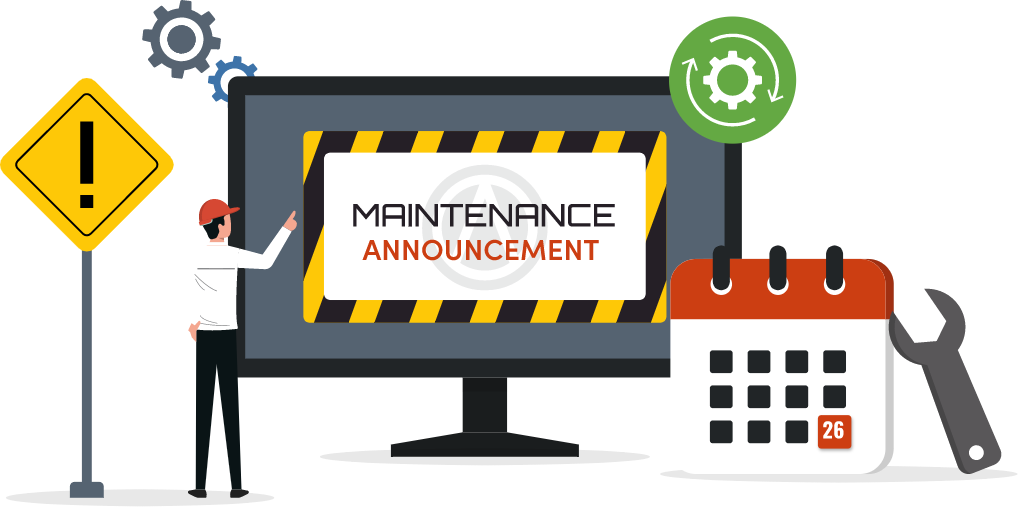How far ahead should a restaurant forecast sales?
Most restaurants forecast one to four weeks in advance for scheduling and purchasing purposes, and quarterly for budgeting or financial planning. The best timeframe depends on your data consistency and business needs.
The Essential Steps Involved in Sales Forecasting for Restaurants
Why Every Restaurant Needs Sales Forecasting
Running a restaurant comes with constant uncertainty - one week you're slammed, the next you're slow. Predicting what each day will bring can feel impossible, but that's exactly where sales forecasting becomes invaluable. By analyzing past revenue, customer traffic, and seasonal trends, restaurant owners can turn unpredictable patterns into actionable insights.
A strong sales forecast helps you make smarter decisions about staffing, ordering, and budgeting, reducing waste and preventing last-minute scrambles. According to industry data, restaurants that regularly forecast their sales can lower food and labor waste by up to 15%, simply by aligning their operations with demand.
The good news is, forecasting doesn't require complex software or a data science degree. It's about understanding your own numbers and spotting patterns over time.
Step 1. Gather Accurate Historical Sales Data

The foundation of any reliable sales forecast starts with accurate historical data. Before predicting what's coming, you need a clear picture of what's already happened. This means collecting data from your POS system, accounting records, and daily reports over a meaningful time period - typically the last 6 to 12 months.
Start by gathering your total daily sales, then break them down further into useful categories like menu type (breakfast, lunch, dinner), item sales, and average check size. Tracking customer counts, delivery vs. dine-in orders, and average ticket values can also reveal hidden patterns. The more detailed your dataset, the more accurate your forecast will be.
Once you've collected the numbers, clean the data. Remove days that aren't representative of typical business - such as one-off catering events, system outages, or extreme weather days. These outliers can distort your results if not filtered out.
It's also important to align sales with context. For example, if you notice higher weekend sales, note whether promotions or local events played a role. Labeling these influences now will make it easier to interpret trends later.
If you're new to tracking, start small. Even a simple Excel sheet that logs daily sales, guest counts, and average check amounts can help you begin seeing patterns. Over time, you can expand to more advanced tracking through your POS or restaurant management system.
Streamline Your Sales and Payment Reconciliation
Simplify Management of Your Finances with Altametrics
Step 2. Identify Sales Patterns and Trends
Once you've collected your historical sales data, the next step is to spot patterns. This is where the numbers start to tell a story about your restaurant's performance. Look for recurring trends - which days of the week are busiest, which months bring higher sales, and how holidays or weather affect customer flow.
Start by creating simple visuals like line or bar graphs to see how sales rise and fall over time. You may find that Fridays consistently outperform Mondays or that December's holiday rush is followed by a slow January. Recognizing these cycles helps you prepare for both busy and quiet periods with more precision.
Pay close attention to day-part trends too. For example, breakfast sales might surge during the workweek while dinner picks up on weekends. Tracking by meal period helps you schedule labor and purchasing more accurately.
It's also useful to identify menu-level patterns. Are certain items top sellers at specific times of the year? Do new menu additions consistently spike interest, then taper off? These insights can guide menu planning and pricing decisions.
Don't forget external influences - sports events, festivals, and local school schedules often create predictable shifts in demand. Note these in your data sheet or POS notes so you can connect cause and effect.
The goal here isn't perfection but awareness. By identifying sales trends, you can begin forecasting with context, not just numbers. These insights give you the confidence to plan staffing, ordering, and promotions around real patterns - not assumptions.
Step 3. Factor in External Influences
Even the best in-house data can miss crucial details if you don't consider what's happening outside your restaurant. External factors play a major role in shaping customer behavior, and understanding them is essential for accurate forecasting. Here's how to approach it step by step -
1. Account for Seasonality
Most restaurants experience predictable ups and downs throughout the year. Warmer months may bring patio traffic and tourists, while colder seasons can slow dine-in sales but boost delivery orders. Track these changes and align your menu, staffing, and inventory levels with the season. For instance, ice cream shops might see a 30% spike during summer, while soup and coffee sales rise in winter.
2. Monitor Local Events and Activities
Festivals, concerts, parades, and sports games can significantly affect your sales - either increasing walk-ins or reducing them due to traffic congestion. Keeping a local event calendar helps you forecast these changes. If a big concert is scheduled nearby, plan for more foot traffic and larger orders.
3. Watch Economic and Market Conditions
Broader economic trends like inflation, fuel prices, and employment rates influence how much people are willing to spend when dining out. A small dip in local income or a rise in menu costs can impact your average ticket size. Check reports or use online tools to stay informed about regional trends.
4. Track Competitive and Environmental Changes
Competitor openings, street closures, or parking changes can all shift customer behavior. Documenting these developments in your forecasting notes helps you anticipate sudden spikes or drops in sales.
By systematically tracking these external factors, you build a complete, realistic forecast that connects your internal performance data with the real-world forces that drive restaurant demand.
Step 4. Choose the Right Forecasting Method

Once you've gathered data and identified both internal and external patterns, it's time to decide how to forecast your sales. There isn't a one-size-fits-all approach - the right method depends on your restaurant's size, data availability, and comfort level with analysis. Here are the main forecasting methods restaurant owners can use -
1. Simple Year-over-Year Comparison
This is the most straightforward approach. You compare sales from the same period last year and adjust based on recent changes - like new menu items or price increases. For example, if last July's average weekly sales were $12,000 and you've seen 5% growth this year, you can project $12,600 for this July.
2. Moving Average Method
This method smooths out short-term fluctuations by averaging sales over a specific time frame (such as the past four weeks). It helps reveal longer-term trends and is particularly useful for restaurants with steady sales patterns.
3. Time Series Analysis
A more advanced option that examines patterns over time - daily, weekly, or monthly - to predict future sales. It accounts for seasonality and recurring patterns, offering a deeper level of accuracy.
4. Percentage Growth Model
This method estimates future sales by applying a fixed growth percentage based on past performance or industry trends. It's ideal for restaurants expanding or entering new markets.
When choosing a method, simplicity and consistency matter more than complexity. Start with one model, track its accuracy, and refine it as you gain more data. The key is to use a forecasting method you understand well enough to adjust - because even the best model won't work without regular review and fine-tuning.
Step 5. Apply the Forecast to Operations
A forecast only becomes valuable when you apply it to everyday decisions. Turning your projections into action allows you to control costs, improve service, and maximize profit. Once your sales forecast is in place, use it as a practical roadmap for running your restaurant more efficiently.
1. Staffing and Scheduling
Your forecast helps you predict how busy each shift will be so you can schedule the right number of employees. For instance, if your forecast shows a 20% increase in weekend traffic, plan extra cooks or servers to maintain service speed. Likewise, if Mondays are historically slow, schedule fewer hours to reduce labor costs without hurting service quality.
2. Purchasing and Inventory Management
Forecasts guide your ordering decisions by estimating how much product you'll actually need. If you expect 15% higher sales next week due to a holiday, increase your ingredient orders accordingly. Conversely, reducing orders before a slow period helps minimize spoilage and waste - two of the biggest hidden costs in food service.
3. Budgeting and Cash Flow Planning
Forecasting makes it easier to anticipate upcoming expenses and revenue. You'll know when to expect strong cash flow and when to conserve funds for slower months. This foresight supports better supplier negotiations, payroll management, and promotional timing.
4. Menu and Promotion Adjustments
Use forecast data to plan specials or promotions strategically. If your projections show a midweek slump, introducing a "Tuesday Combo Deal" could help balance traffic across the week.
Applying your forecast across operations creates alignment - every part of your business, from the kitchen to the cash register, operates with a shared understanding of what's ahead. That clarity turns forecasting from a spreadsheet exercise into a real tool for daily success.
Step 6. Review, Measure, and Adjust Regularly
Sales forecasting isn't a one-time task - it's an ongoing process that improves as you continuously review and refine your data. Even the most accurate forecasts will need adjustments as market conditions, menu prices, or customer behavior shift. The key is to treat forecasting as a living system that evolves with your restaurant.
1. Compare Forecasted vs. Actual Sales
After each week or month, compare your forecasted sales with your actual results. Identify where you were accurate and where you missed the mark. If you forecasted $10,000 but earned $9,200, calculate the variance - in this case, an 8% difference. Understanding these gaps helps you pinpoint which factors (like weather, staff shortages, or marketing efforts) influenced the outcome.
2. Identify Consistent Deviations
If certain days or time periods are consistently off, investigate why. Maybe lunch traffic is growing faster than dinner, or your delivery sales have increased since joining a new platform. Recognizing these consistent deviations allows you to recalibrate your forecasting model for better accuracy.
3. Update Data Inputs Regularly
Don't rely on outdated information. Add new data every week or month, and adjust for any business changes - such as new menu items, pricing, or promotions. The fresher your data, the sharper your projections.
4. Use Insights to Improve Operations
Finally, use what you learn to make better business decisions. If you see steady growth on weekends, you might expand weekend hours or test a new special.
When you regularly review and adjust your forecasts, you're not just reacting to sales - you're anticipating them. This proactive approach gives you tighter control over your operations, budgets, and growth strategy.
Turning Data into Predictable Growth
Sales forecasting is more than just a financial exercise - it's about building predictability in an unpredictable business. By understanding your numbers, identifying patterns, factoring in outside influences, and continuously refining your forecasts, you transform chaos into clarity. Every informed decision - from staffing to inventory to promotions - becomes part of a strategy rooted in data, not guesswork.
Restaurants that consistently forecast their sales don't just avoid mistakes; they plan ahead with confidence. They order smarter, schedule better, and protect profit margins even when business conditions fluctuate. Over time, this discipline leads to a smoother operation and more sustainable growth.
The best part? You don't have to do it manually. With the right technology, forecasting becomes simpler, faster, and more accurate - freeing you to focus on what matters most- your guests and your team.
Take the Next Step with Altametrics
If you're ready to bring automation, accuracy, and insight to your restaurant forecasting, explore Altametrics.
Altametrics offers advanced restaurant management tools that integrate sales data, labor costs, and forecasting models in one intuitive platform. Whether you manage one location or many, Altametrics helps you turn data into smarter daily decisions - without the spreadsheets and guesswork.
Predict demand. Control costs. Grow with confidence. Learn more about Altametrics by clicking "Schedule a Demo" below.
Get the job done right, every time!
Revolutionize Your Hiring Process with Altametrics!



























































































































































































































































